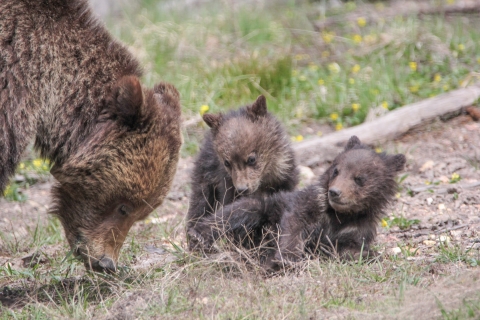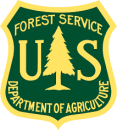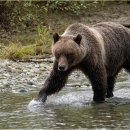States
WashingtonGrizzly bears occupied the North Cascades region of Washington for thousands of years as a key part of the ecosystem, distributing native plant seeds and keeping other wildlife populations in balance. Populations declined primarily due to direct killing by humans.
In November 2022, the National Park Service and U.S. Fish & Wildlife Service initiated an Environmental Impact Statement (EIS) process to evaluate options for restoring grizzly bears to the North Cascades Ecosystem. The process also explored a potential 10(j) experimental population designation from the U.S. Fish & Wildlife Service, which provides land managers with additional options for managing animals. Learn more about 10(j) experimental population designations
Current Status
On April 25, 2024, the two agencies announced a Record of Decision to actively restore grizzly bears to the ecosystem. The decision is considered the conclusion of the EIS process. The U.S. Fish & Wildlife Service has also released a final 10(j) rule, designating a nonessential experimental population. There is no set timeline for when translocation of grizzly bears to the ecosystem may begin.
News Releases
4/25/24- Agencies announce decision to restore grizzly bears to North Cascades
10/13/23- Additional public meetings scheduled on options for restoring grizzly bears to the North Cascades
9/28/23- Public comments sought on options for restoring grizzly bears to the North Cascades
Documents
Final 10(j) Rule on Regulations.GOV
Final 10(j) Rule NoticE in The Federal Register
Frequently Asked Questions
final 10(j) Rule FAQs
Get answers to some of the most common questions about the restoration and 10(j) experimental population designation.
EIS Process
Go to the EIS Project Homepage
View documents and learn about the EIS process at the link above.
Background Documents
- A Synthesis of Historical and Recent Reports of Grizzly Bears (Ursus arctos) in the North Cascades Region (National Park Service, 2018)- PDF
- North Cascades Chapter of the National Grizzly Bear Recovery Plan (U.S. Fish & Wildlife Service, 1997)- PDF
- Modeling Reintroduction in a Time of Change- How will rising temperatures impact a second chance for grizzlies in the North Cascades Ecosystem? (National Park Service, 2023)
Bear Safety
Bear conflict prevention guidance from the Interagency Grizzly Bear Committee for:





